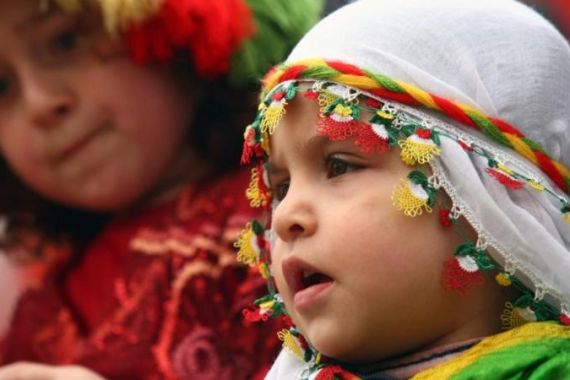Beyond multiculturalism
While multiculturalism aims for unity, we are still working towards tolerance – a fact made painfully clear post-9/11.

Last weekend, two days after the start of spring, thousands gathered joyfully on a closed-off city street to celebrate Nowruz, the Persian New Year. A “haft-sin” table, symbolising various elements of spring renewal was displayed, Iranian flags draped nearby buildings, and Persian sweets and tea were generously served. On the main stage, traditional music and dance performances entertained the ebullient crowd. Dignitaries, community leaders and even the two leading Mayoral candidates greeted the crowd with well wishes for the New Year of 1392.
Such was the scene in Los Angeles’ Westwood, home to thousands of Iranian Americans. According to county records, there are at least 247 languages spoken and approximately 62 ethnically themed festivals held every year in Los Angeles County. Is this a multicultural success story or a cautionary tale?
The philosophy of multiculturalism was born out of a desire to respond to growing cultural and religious diversity, a way to redress historical injustices and build a more equitable society. The goal was to move from mere tolerance to understanding and ultimately to unity. Its policies promote “cultural democracy”, the right of all groups to be represented in the cultural landscape of a diverse society.
While the aims of such policies might have been enlightened, the application has been muddled. Multicultural societies inherently consist of diverse religious and moral views. How do we create common ground while promoting differences?
My experience of running a Los Angeles museum, dedicated to cultural understanding led me to question the wisdom of multiculturalism. The price tag for multiculturalism has been the ascent of rigid identity politics, where cultural groups proclaim either their “specialness” or “victimhood”, continually setting themselves apart from others.
The result has been a backlash from those in the cultural majority and rivalry for resources amongst minorities. While multiculturalism aimed for unity, in truth we are still working towards tolerance – a fact made painfully clear in a post-9/11 landscape where fear is the dominant cultural marker and “the Other” is usually to blame.
|
“The philosophy of multiculturalism was born out of a desire to respond to growing cultural and religious diversity, a way to redress historical injustices and build a more equitable society.” |
A fundamental flaw of multiculturalism is the view that the broad concept of culture is pure and static. It elevates individual cultures as distinct self-contained universes when in reality they have long interacted and influenced one another. Trade, migration, war and imperialism have ensured cultural hybridity in nearly every corner of the world. This dispersion of cultural influences is the hallmark of the 21st century, thanks in part to technological advances. So why do so many cling to a singular cultural identity?
As a child of political refugees, I understand deeply the yearning for “home” and the desire to reclaim a cultural identity that has been systematically marginalised or perverted. Yet, it is balance in all things that creates wellbeing, not to mention the challenges of reckoning with historical memory.
My shift away from multiculturalism began during a museum exhibition I organised for Armenian painter Hagop Hagopian, who was exiled from his homeland until adulthood. His moody paintings featured either arid, lonely desert landscapes or portraits of people with intense sadness and longing in their eyes. The Los Angeles Armenian community enthusiastically welcomed such a depiction of their painful history. Others got to experience Armenian culture for the first time.
One afternoon, a local public elementary school brought their 3rd graders for a tour and several children immediately asked why the paintings were so sad. The arts educator provided a brief background about the Armenian genocide after which an inquisitive young lady raised her hand and asked: “So what did Armenian paintings look like before the genocide?”
The insight of this wise 9-year-old girl made me question the impact of my curatorial practice. Was I creating common ground or reinforcing “Otherness”? Would giving voice to the disenfranchised create understanding or distance? How could I contribute to unity while leaving room for uniqueness? I concluded that it was time to look beyond multiculturalism for something that established connection based on the universal thread of humanity. I was relieved to find the ancient Greeks had already figured it out – in theory.
Cosmopolitism holds that all human beings are linked together by a shared morality. The thinking goes that each human dwells in two communities: the local community of one’s birth, and the larger community of human aspiration. According to the ancient Greek philosopher Hierocles, the ideal personal identity is based on related concentric circles, beginning with the self and then expanding outward to include circles of family, friends, local community, nation and finally, all of humanity.
The ancient Greeks invented the concept of global citizenship. Contemporary philosopher and Princeton University philosophy Professor Kwame Anthony Appiah has updated the theory for the 21st century in his glorious book, Cosmopolitism: Ethics in a World of Strangers. The application? Well, that is up to you and me, my friend.
Maryna Hrushetska is an art curator, storyteller and global citizen. From 2005 to 2010, she served as the Executive Director of the Los Angeles based Craft and Folk Art Museum.
